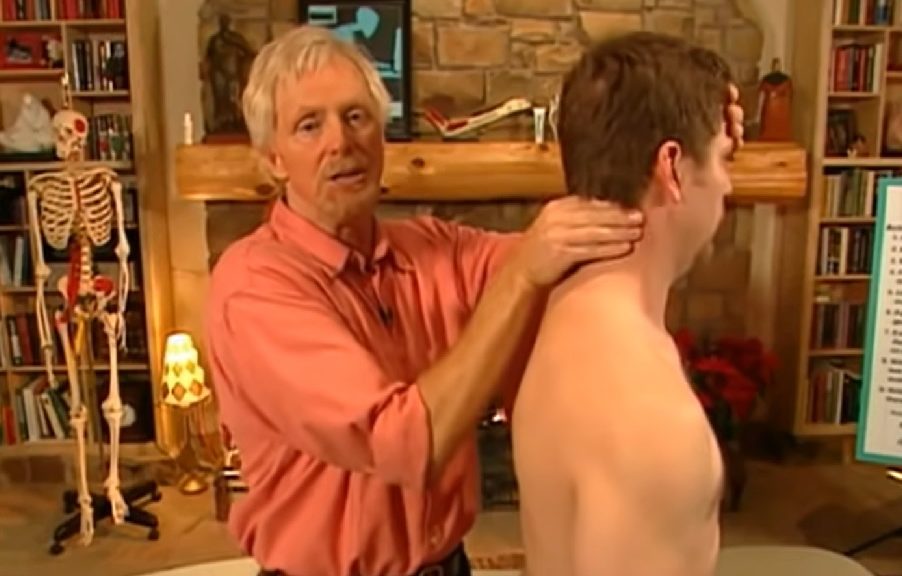
Dowager’s Hump – Massage and Exercise
Please note that this page is mainly for my personal reference – based on various YouTube resources.
Deep Tissue Massage and Manual Therapy for Relieving Dowager’s Hump – Erik Dalton
Massage techniques – standing, assess how tight are the sub-occiptal muscles and then reassess when client is sitting. If tone of sub-occipals are tighter when standing implies that there is an input from the pelvis.
Side-lying fist into upper traps. Lean in and get client to gently lift shoulder (restricted – PNF style) before relaxing and sweep fist down traps.
Client prone and then get client to lift head off table. Hook fascia with forearm whilst on transverse processes to mobilise any “stuck” facet joints – all whilst client lifts head up and down off table. Flying V with fingers in groove – again client raises and lowers head. Hold on any hypertonic spots. Can use thumbs as well.
4 Exercises to Fix Dowager’s Hump (Neck Hump) & Poor Posture for GOOD
Two types of dowager’s hump. One is a fixed deformity related to osteoporotic fractures as we age (jumping is good for stimulating muscular skeletal development). Second is flexible deformity – no actual structural injury but caused by gravity. Traditional approaches have involved passive stretching or extending back over a foam roller. Key however is to activate deep muscles surround thoracic spine.
Exercises: Allow yourself to slump and then point finger at chin and draw chin back. Repeat a couple of times but then hold, relax and rotate shoulders both ways a few times whilst maintaining alignment.
Supine Chin Tuck – lie on ground, tuck chin in and lift head off floor (very slightly – just enough to be able to put piece of paper between head and floor). Breathe naturally. Do recommended no of reps and sets.
T-Spine Extension – Start off in four point position with fully extended spine and anterior pelvic spine. Gradually unwind from pelvis but maintain the thoracic spine extension to strengthen muscles you need to.
Active Hands Behind Head – standing. Key is to maintain neutral spine. Hands behind head but then lift hands off head and drive elbows back and hold. Avoid lumbar extension.
Wall Neck Side Bend – Stand up against wall and laterally flex neck muscles. Keeping head against wall but not going to any points of pain.
For an alternative view this view dispels the myth that there is a link between forward head posture and pain.
However doesn’t mean that moving out of FHP doesn’t help an individual with pain. Managing lifestyle may though be a better approach to be able to tolerate pain associated with FHP.